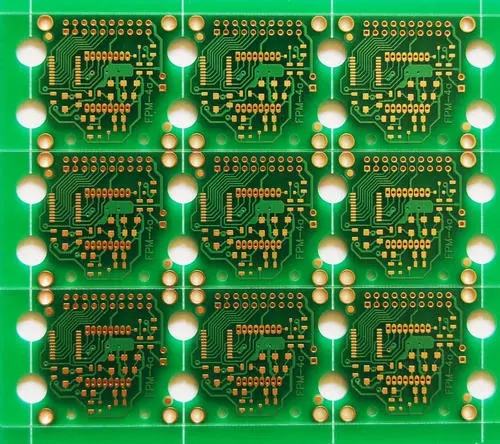Talking about the experience of repairing industrial control PCB board
Talking about the experience of repairing industrial control circuit boards 1. How to repair the VCC short circuit fault in the circuit board

In circuit board maintenance, it is a headache if you encounter a short circuit of the VCC power supply, because there are too many components connected in parallel between VCC and GND, including chips, capacitors, and transistors. There may be a short circuit, and the tin point and the copper foil may also be short circuited. The general maintenance personnel will remove the components one by one until the short circuit is eliminated after removing a certain component. If you are unlucky, the components on the entire board are almost removed and the fault is not found. Not only can the fault not be found, but also It will damage the PCB board.
Here are two more convenient methods:
1) For the plug-in capacitor on the PCB board, you can use diagonal pliers to cut off one foot (be careful to cut from the middle, do not cut all the roots or cut the circuit board), the plug-in IC can cut off the power VCC pin, and short-circuit when one of the feet is cut. Disappear, a certain chip or capacitor is short-circuited. If it is a SMD IC, you can use an electric soldering iron to melt the solder on the power pin of the IC and lift it up to leave the VCC power supply. After replacing the short-circuit components, re-weld the cut or upturned parts.
2) There is a quicker method, but a special meter is used-a milliohm meter. As everyone knows, the copper foil on the PCB board also has resistance. If the thickness of the copper foil on the PCB is 35um and the printed line width is 1mm, then every 10mm length, its resistance value is about 5mΩ, such a small resistance value, use ordinary The multimeter cannot be measured, but it can be measured with a milliohm meter. It can be assumed that a certain component is short-circuited. It is 0Ω measured with an ordinary multimeter, and it may be tens of milliohms to hundreds of milliohms when measured with a milliohm meter. When the test lead is just placed on the two pins of the short-circuit component, the result is The resistance value must be the smallest (because if it is measured on the two pins of other components, the resistance value obtained also includes the resistance value of the copper foil trace on the circuit board), so by comparing the resistance value difference of the milliohm meter, when the measurement is When the resistance value of a certain component (if it is solder or copper foil has a short circuit) has the smallest resistance value, the component is the key suspect. In this way, the point of failure can be quickly found.
The above is an introduction to the experience of overhauling industrial control circuit boards. Ipcb is also provided to PCB manufacturers and PCB manufacturing technology.